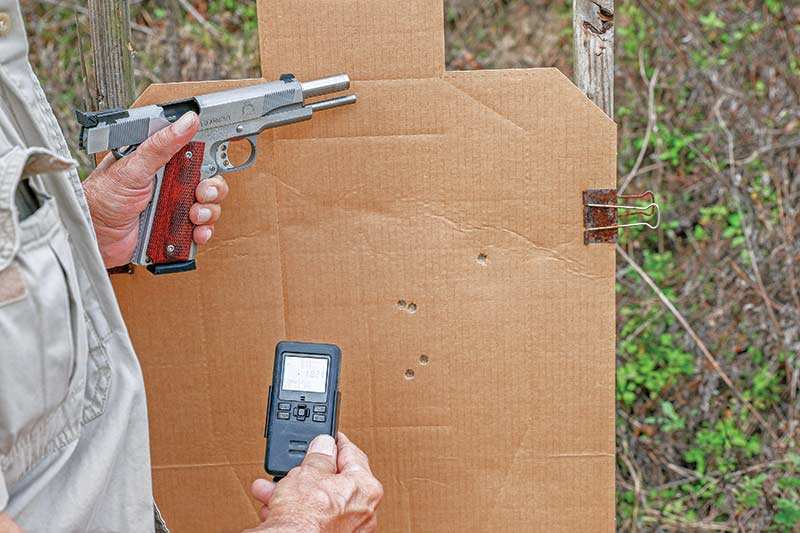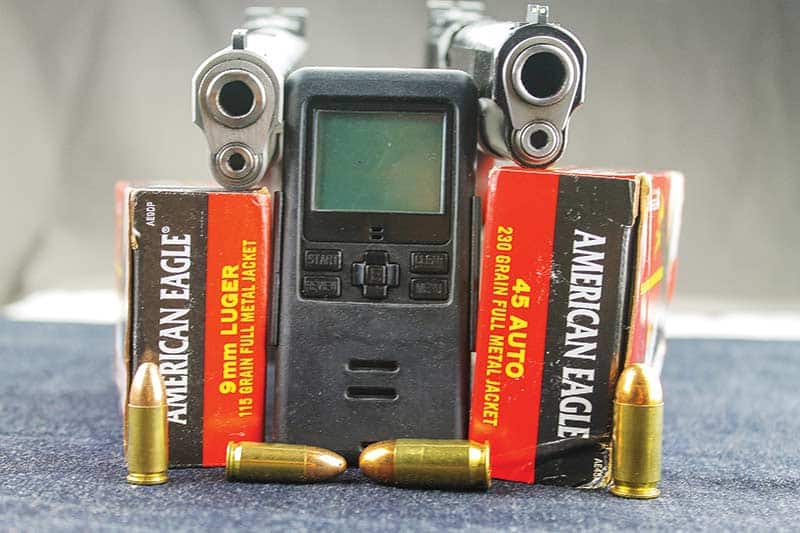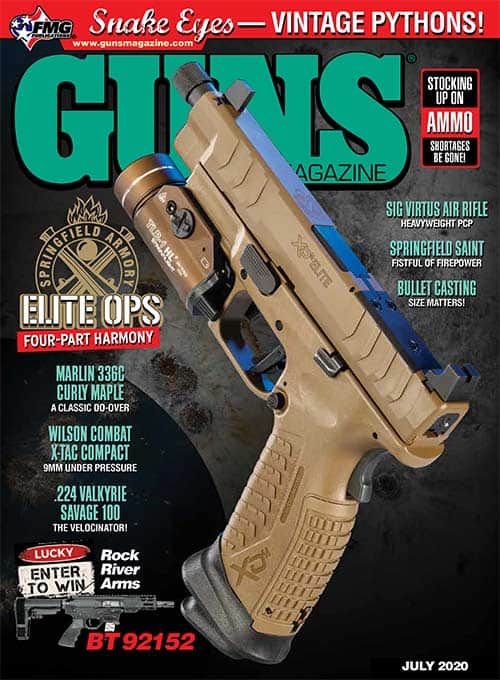Make Ready
I stood at five yards from an IPSC silhouette target, about the distance my friend and colleague Tom Givens has determined to be average between the combatants in the many gunfights his students have engaged and won. Time was measured from first shot to last in a five-shot string. I fired from a strong Isosceles stance, weight forward, wrists locked, using a max force crush grip with both hands.
The 9mm delivered five hits in 97/100ths of one second. The group clustered high in the center chest, four in the “A-zone” and one just above it. I gave it one point down, 24 out of 25 possible points, or 96 percent hit value. The .45 punched five holes in the A-zone in 1.01 seconds, 4/100ths of a second slower with 100 percent hit value. Using IPSCs Comstock Count scoring formula, score divided by time, was 24.74 with the 9mm and 24.75 for the .45. Group size, measured center to center between the farthest-flung shots, was 7.55" for the 9mm (one shot pulled low, the other four in 3.55"). With the .45 it was 3.65" for all five and 1.90" for the best four. The harder-kicking gun had actually scored better in terms of hits, taking 0.040 seconds longer. Four one-hundredths of one second is not a big difference …
Split times, the lapse between shots, averaged exactly a quarter second with the 9mm. With the .45, splits were 0.26, 0.24, 0.25, and 0.26, averaging 0.2525 of one second. I would expect this much difference or more between two runs with the same gun and ammo by the same shooter.







